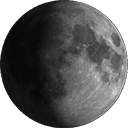 An artist’s conception of the exoplanet Kepler-452b (R), a possible candidate for Earth 2.0, as compared with Earth (L). Image credit: NASA/Ames/JPL-Caltech/T. Pyle.
An artist’s conception of the exoplanet Kepler-452b (R), a possible candidate for Earth 2.0, as compared with Earth (L). Image credit: NASA/Ames/JPL-Caltech/T. Pyle.
Is Proxima Centauri’s ‘Earth-like’ planet actually like Earth at all?
By Ethan Siegel
Just 25 years ago, scientists didn’t know if any stars—other than our own sun, of course—had planets orbiting around them. Yet they knew with certainty that gravity from massive planets caused the sun to move around our solar system’s center of mass. Therefore, they reasoned that other stars would have periodic changes to their motions if they, too, had planets.
This change in motion first led to the detection of planets around pulsars in 1991, thanks to the change in pulsar timing it caused. Then, finally, in 1995 the first exoplanet around a normal star, 51 Pegasi b, was discovered via the “stellar wobble” of its parent star. Since that time, over 3000 exoplanets have been confirmed, most of which were first discovered by NASA’s Kepler mission using the transit method. These transits only work if a solar system is fortuitously aligned to our perspective; nevertheless, we now know that planets—even rocky planets at the right distance for liquid water on their surface—are quite common in the Milky Way.
On August 24, 2016, scientists announced that the stellar wobble of Proxima Centauri, the closest star to our sun, indicated the existence of an exoplanet. At just 4.24 light years away, this planet orbits its red dwarf star in just 11 days, with a lower limit to its mass of just 1.3 Earths. If verified, this would bring the number of Earth-like planets found in their star’s habitable zones up to 22, with ‘Proxima b’ being the closest one. Just based on what we’ve seen so far, if this planet is real and has 130 percent the mass of Earth, we can already infer the following:
- It receives 70 percent of the sunlight incident on Earth, giving it the right temperature for liquid water on its surface, assuming an Earth-like atmosphere.
- It should have a radius approximately 10 percent larger than our own planet’s, assuming it is made of similar elements.
- It is plausible that the planet would be tidally locked to its star, implying a permanent ‘light side’ and a permanent ‘dark side’.
- And if so, then seasons on this world are determined by the orbit’s ellipticity, not by axial tilt.
Yet the unknowns are tremendous. Proxima Centauri emits considerably less ultraviolet light than a star like the sun; can life begin without that? Solar flares and winds are much greater around this world; have they stripped away the atmosphere entirely? Is the far side permanently frozen, or do winds allow possible life there? Is the near side baked and barren, leaving only the ‘ring’ at the edge potentially habitable?
Proxima b is a vastly different world from Earth, and could range anywhere from actually inhabited to completely unsuitable for any form of life. As 30m-class telescopes and the next generation of space observatories come online, we just may find out!


